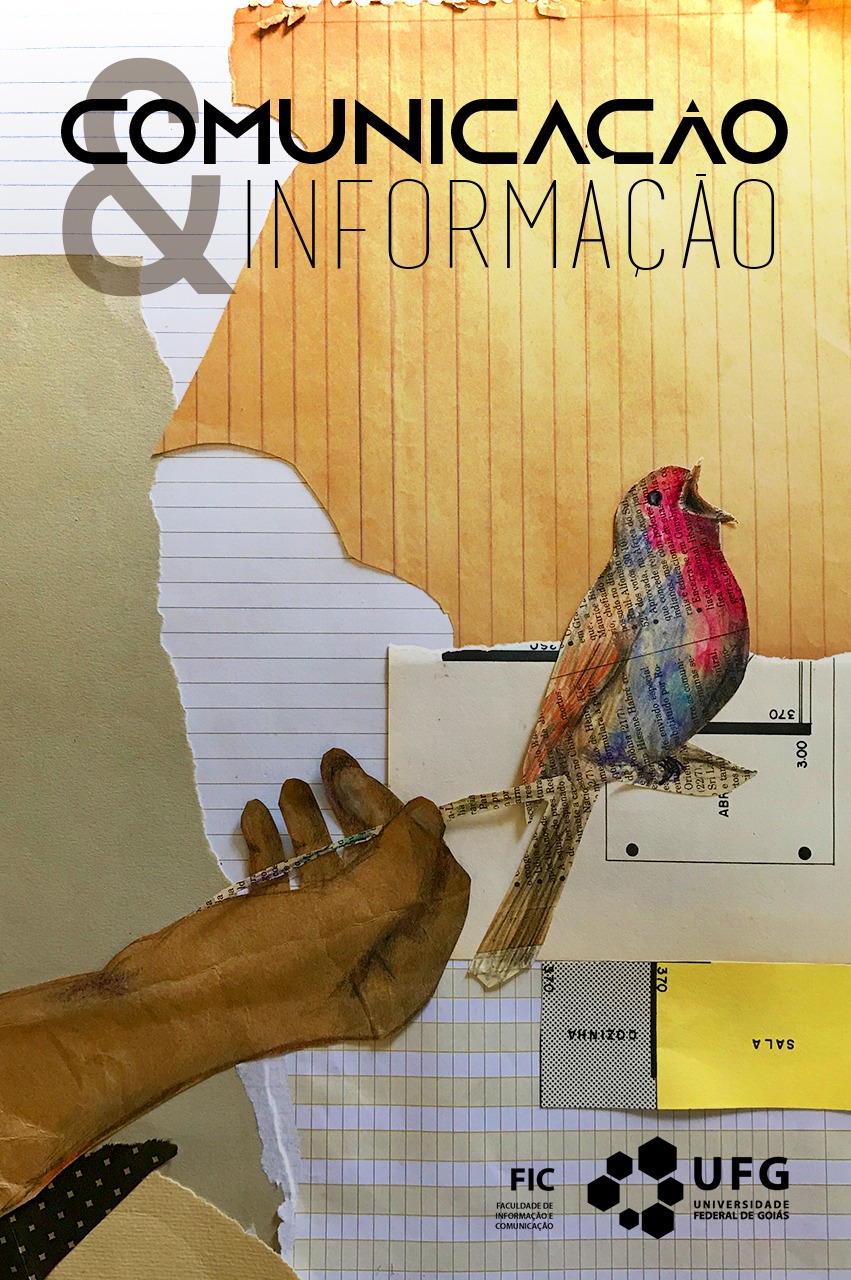On the Status of Image in Digital Networks
Notes from a Political Uprising
DOI:
https://doi.org/10.5216/ci.v23.66000Keywords:
Image, Digital networks, Feeling, Perception, Neda Agha-SoltanAbstract
This paper results from a research project that intended to formulate a theoretical proposition about the modes and means of operation of images in digital contexts. Trying to follow a phenomenological path, the article focuses on the case of Neda Agha-Soltan, a young woman murdered in Iran during a political protest in 2009. The images of her death would gain wide repercussion, reappearing even in subsequent manifestations, especially of the Arab Spring. From this case – without, however, any pretension to generalize our propositions –, we seek to identify certain aspects specific to a kind of image generated and disseminated from the digital element. That image, to a certain extent an inheritance of electricity and technical reproducibility (W. Benjamin), and penetrating the most varied spheres of life with the explosion of digital technologies, would reverberate – in a more extreme mode – echoes of a crisis of perception already announced by the German philosopher. Hence, we ask: to what extent would the hypertrophy of these digital images give us a flank to glimpse even another relation with the images, a new way of accessing and perceiving them? How could we describe its modes of operation on us? Recognizing the vastness of the theme and the possible ways to approach it, this text seeks, through congruent notions of other authors, to problematize these dilemmatic issues starting, above all, from the notion of digital image as a kind of common “surface”, territory of sharing the feeling.Downloads
References
BENJAMIN, W. A obra de arte na era de sua reprodutibilidade técnica. In: BENJAMIN, W. Magia e técnica, arte e política: ensaios sobre literatura e história da cultura. Trad. Sérgio Paulo Rouanet. 8. ed. São Paulo: Brasiliense, 2012. Data da primeira edição[1936].
BENJAMIN, W. Sobre la fotografía. Trad. José Muñoz Millanes. Valencia: Pre-Textos, 2015. Data da primeira edição [1931].
BENJAMIN, W. et al. Benjamin e a obra de arte: técnica, imagem, percepção. Trad. Marijane Lisboa e Vera Ribeiro. Organização de Tadeu Capistrano. Rio de Janeiro: Contraponto, 2012.
BORGES JUNIOR, E. Forma espetacular e imagem bipolar: reflexões sobre abstração e concretude na fruição da imagem midiática contemporânea. In: CONGRESSO BRASILEIRO DE CIÊNCIAS DA COMUNICAÇÃO, XXXIX., 2016, São Paulo. Anais [...]. São Paulo: USP, 2016. p. 1-16.
BORGES JUNIOR, E. What is the post-truth? Elements for a critique of the concept. Brazilian Journalism Research, v. 15, n. 3, p. 496-513, dez. 2019.
DOI: https://doi.org/10.25200/BJR.v15n3.2019.1189
BUCCI, E. Em torno da instância da imagem ao vivo. Revista Matrizes, v. 3, n. 1, p. 65-79, ago./dez. 2009.
BUCCI, E. Televisão objeto: a crítica e suas questões de método. 2002. Tese (Doutorado) - Escola de Comunicações e Artes da Universidade de São Paulo, São Paulo, 2002.
BUCK-MORSS, S. Visual Studies and global imagination. Papers of Surrealism, v. 2, p. 1-29, 2004.
DI FELICE, M. Net-ativismo: da ação social para o ato conectivo. Trad. Eli Borges Junior. São Paulo: Paulus, 2017a.
DI FELICE, M. La cittadinanza digitale: la crisi dell’idea occidentale di democrazia e la partecipazione nelle reti digitali. Milano: Meltemi, 2019.
DI FELICE, M.; PEREIRA, E.; ROZA, E. Net-ativismo: redes digitais e novas práticas de participação. Campinas: Papirus, 2017.
DIDI-HUBERMAN, G. Peuples exposés, peuples figurants. Paris: Les Éditions de Minuit, 2012. L'oeil de l'histoire, 4.
FLUSSER, V. O universo das imagens técnicas: elogio da superficialidade. São Paulo: Annablume, 2008.
GOFFMAN, E. La mise en scène de la vie quotidienne: 2. Les relations en public. Trad. de Alain Kihm. Paris: Les Éditions de Minuit, 1973.
GOMBRICH, E. Aby Warburg: an intellectual biography. 2. ed. Oxford: Alden Press Limited, 1986. Primeira edição [1970].
HABERMAS, J. Mudança estrutural da esfera pública: investigações sobre uma categoria da sociedade burguesa. Trad. Denílson Luís Werle. São Paulo: Unesp, 2014. Primeira edição [1962].
JOHN, N. A. Sharing and Web 2.0: the emergence of a keyword. New Media & Society, v. 15, n. 2, p. 167-182, 2012.
MAFFESOLI, M. Arcaísmo, cibercultura e reencantamento do mundo: as dobras do cotidiano tecnológico. Comunicação & Informação, v. 21, n. 2, p. 4-18, out. 2018.
MAFFESOLI, M. La contemplation du monde: figures du style communautaire. Paris: Grasset, 1993.
NIETZSCHE, F. O nascimento da tragédia ou helenismo e pessimismo. Trad., notas e posfácio de Jacó Guinsburg. São Paulo: Companhia das Letras, 2007. Primeira edião [1872].
PERNIOLA, M. Do sentir. Trad. António Guerreiro. Lisboa: Presença, 1993.
POGGI, J. (org.). Edvard Munch: Écrits. Trad. Luce Hinsch. Paris: Les Presses du Réel, 2011.
SIEREK, K. Images oiseaux: Aby Warburg et la théorie des médias. Trad. par Pierre Rusch. Paris: Klincksieck, 2009.
SOLTANI, N. Mein gestohlenes Gesicht: Die Geschichte einer dramatischen Verwechslung. München: Kailash, 2012.
WINCKELMANN, J. J. Reflexões sobre a arte antiga. Trad. Herbert Caro e Leonardo Tochtrop. Porto Alegre: Movimento, 1975. Primeira edição [1764].
Downloads
Published
How to Cite
Issue
Section
License
Os autores dos trabalhos publicados na revista Comunicação e Informação retêm os direitos autorais sem restrições e concedem à revista o direito de primeira publicação, com o trabalho simultâneo licenciado sob a Licença Creative Commons Atribuição-NãoComercial que permite o compartilhamento do trabalho para fins não comerciais com reconhecimento da autoria e o privilégio de publicação primeiramente por esta revista. Caso o texto venha a ser publicado posteriormente em outro veículo, solicita-se aos autores informar que o mesmo foi originalmente publicado como artigo na revista Perspectiva, bem como citar as referências bibliográficas completas dessa publicação.
Os direitos autorais dos artigos pertencem aos autores e o conteúdo dos artigos assinados é de responsabilidade exclusiva dos autores.
A revista se reserva o direito de efetuar, nos originais, alterações de ordem normativa, ortográfica e gramatical, com o intuito de manter o padrão culto da língua, respeitando, porém, o estilo dos autores.
A revista também se reserva o direito de traduzir o artigo, no todo ou em parte, para o inglês ou para o português, dependendo do idioma em que o artigo tenha sido escrito originalmente.



